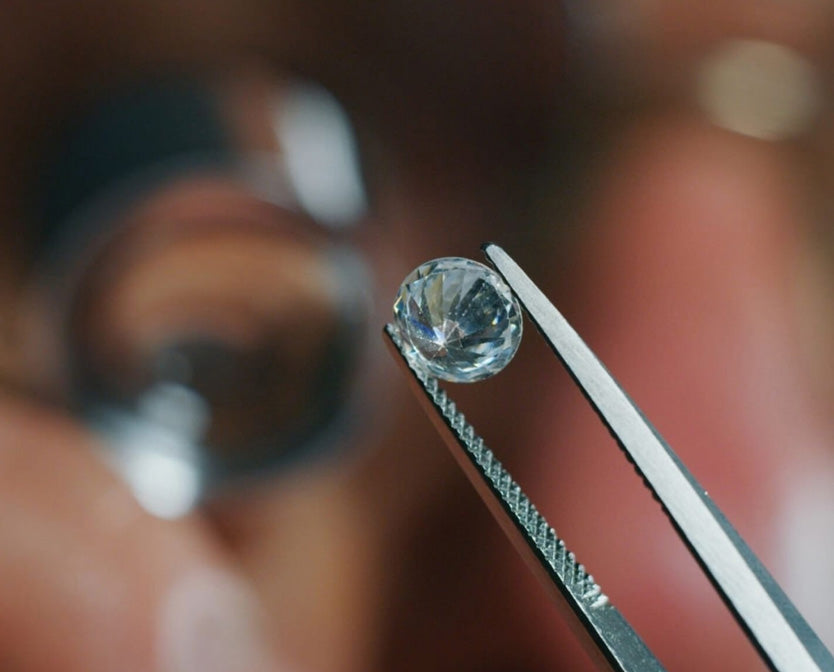Jewelry Education
Returns & Refunds
Privacy & Security
Shipping & Delivery
Payment
Helpful Information
About Javda

Stone Setting Methods
Stone Setting Methods
The act of artisans attaching gemstones to a metal mold is a crucial stage in the jewelry-making process. By emphasizing the shape, size, transparency, and color of gemstones, stone settings both preserve and enhance them. This is accomplished by preserving the gemstone's integrity and highlighting its inherent beauty.
Depending on the size and cut of the diamonds, jewelry manufacturers employ several techniques to set gemstones in their pieces. Some of the below-discussed processes and stone-setting techniques are accepted and valued by the global community. Every technique has benefits of its own and is selected according to the kind of stone, style, and desired look.
Prong Setting

In jewelry, prong settings are frequently used for diamonds. It holds the diamond in four or six claws.
Additionally, light can enter through these claws from all directions. As a result, the diamond seems larger and more brilliant. It may also safely handle larger gems.
Bezel Setting

The stone is held and encased by the rim in a Bezel setting. The bezels can be shaped in any way to fit the stone, or they can have straight, scalloped edges. The backs are used to set rings, bracelets, necklaces, and earrings. You can open or close them. In a bezel setting, warmer-colored diamonds look stunning set in yellow gold.
Channel Setting

The term "setting stones side by side" usually describes a tightly spaced or channel setting of stones. This kind of setting is primarily used for wedding and anniversary rings.
We arrange the gemstones side by side in a Channel setting, with no metal dividing them. The outside metal ring is then molded by the artisans over the stone edges. Compared to a bead or prong setting, this offers the diamond's edge greater protection, resulting in a smoother exterior.
Bar Setting

Tennis bracelets, necklaces, and wedding bands are among the jewelry items that frequently include this setting. This is a ring set with diamonds, each secured by a thin bar that is shared by two stones. The Bar setting combines classic and modern design elements.
Pave Setting

Stones that are tightly spaced apart are separated by tiny metal beads. A basic center stone can have its brilliance enhanced by accent stones set in pave. Traditionally, the word "pave" refers to a large space covered in gemstones and beaded metal.
The pave setting is created by using several tiny stones. These slack diamonds are fitted with tiny prongs.
The idea is to produce a surface that shimmers and shines continuously. This permits light to bounce off the facets of the diamond. This mounting type is preferred for earrings and engagement rings.
Tension Setting

A tension setting is a type of diamond ring setting where the diamond is held in place by pressure. It does not use a rim setting, a groove, or tines. The diamond is pushed by a spring inside the platinum or gold setting. Additionally, it features tiny grooves or etchings to retain the diamond firmly.
The diamond seems to 'hover' or dangle in midair with no discernible backing. This is a safe way to set a diamond in a wedding or engagement ring.
Gypsy or Flush Setting

You may recognize the Flush setting from other men's jewelry items you've seen. The gem is inserted into the band, which retains it in place with its metal. All that is seen is the jewel's peak.
Bead Setting

Setting beads on jewelry entails inserting stones into holes that have already been drilled. To accomplish this, mark the location of the gem on the metal surface with a bur.
I set the stone down and then use an engraving tool to remove the metal beads and set it in place. These prongs are pushed over the stone's edge by the beading tool as it rounds. Although it's not as common today, this method was very common in the 20th century.
Invisible Setting

It is challenging to conceal any metal by placing stones closely together and producing an invisible setting. The surface appears continuous and smooth as a result. Experts view it as a more sophisticated and improved technique for setting stones. To keep the stones in place, we chisel them with grooves and install them on metal tracks.
Cluster Setting

Setting diamonds or other jewels closely together in a cluster is how a cluster setting style is created. These stones are sometimes arranged in an abstract pattern or to resemble a stylized floral. Cluster rings frequently have several layers and rise well over the hand. There are two ways to place the stones: more compactly or wide and airy.

 Round
Round Radiant
Radiant Princess
Princess Asscher
Asscher Cushion
Cushion Marquise
Marquise Emerald
Emerald Heart
Heart Oval
Oval Pear
Pear Start With An Earth Mined Diamond
Start With An Earth Mined Diamond Start With A Lab-Grown Diamond
Start With A Lab-Grown Diamond Start With A Setting
Start With A Setting 
 Start With A Setting
Start With A Setting Start With An Earth Mined Diamond
Start With An Earth Mined Diamond Start With A Lab-Grown Diamond
Start With A Lab-Grown Diamond Halo
Halo Solitaire
Solitaire Three Stone
Three Stone Vintage
Vintage Multirow
Multirow Pave
Pave Rose Gold
Rose Gold Yellow Gold
Yellow Gold White Gold
White Gold Platinum
Platinum Round
Round Princess
Princess Cushion
Cushion Oval
Oval Emerald
Emerald Marquise
Marquise Pear
Pear Radiant
Radiant Heart
Heart Asscher
Asscher
 Pendants
Pendants Earrings
Earrings